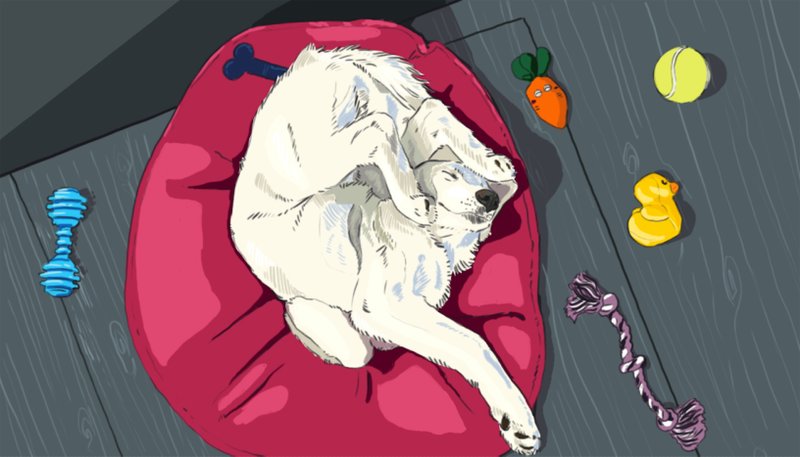Q I recently adopted a dog, Chester, who will be neutered when the pandemic subsides enough to allow the shelter's veterinary staff to resume sterilizing pets. Chester is sweet and fun, but he also lifts his leg to mark his indoor territory with urine, and he humps people's legs.
I know these bad behaviors will stop after he's neutered, but what can we do now to manage them?
A The most common negative behavior exhibited by unneutered — what veterinarians call "intact" — dogs is urinary marking. Most intact dogs sniff the furniture or drapes they intend to mark and then turn, lift a hind leg and spray a little urine to leave a message about themselves, including their reproductive status.
The moment you see Chester starting to sniff, distract him before he turns and begins to lift his leg. Take him outside frequently to mark his outdoor territory and empty his bladder. Praise him when he urinates outside.
If Chester does urinate indoors, clean the area using an enzymatic cleaner to break down the urine and remove the scent. If another dog has marked inside your home, be sure to clean that spot well, or Chester will repeatedly try to mark the area to cover the other dog's scent.
You may need to crate Chester when you can't supervise him and leash him when he's outside his kennel. If he persists in marking, wrap a belly band with an absorbent pad around his middle. Protect his skin by discarding the pad when it gets wet.
When Chester mounts someone's leg, don't reinforce his obnoxious behavior by laughing. Instead, watch for signs he's thinking of doing it. He'll probably lick, nose or paw the person first. When he does, distract him by tossing a toy, ask him to lie down and stay, or put him on a leash.
Give Chester plenty of exercise, and remember the old adage: A tired dog is a good dog.
Q Zara, my young indoor-outdoor cat, suddenly got very sick. I took her to her regular veterinarian, who suspected she was infected with cytauxzoonosis and transferred her to the university veterinary medical center. The vets there agreed and began aggressive treatment, but they made it clear her prognosis is grave.
I hadn't heard of this disease. What is cytauxzoonosis?
A Cytauxzoonosis (sigh-toe-zo-oh-NO'-sis) is caused by a one-celled blood parasite called Cytauxzoon felis that is transmitted to the cat through a tick bite. Lone star ticks and American dog ticks become infected when they bite a bobcat or other wild cat carrying the parasite.
In the United States, cases are most common in the Central, Midwest and Southeast regions during the spring and summer. The disease has been reported in many wild and domestic cats but never in dogs, humans or other species.
Within one to two weeks of being bitten by an infected tick, the cat develops lethargy, loss of appetite and fever. Usually, the infected cat also breathes rapidly and with difficulty, vocalizes loudly and has a racing heartbeat.
These clinical signs progress rapidly over one week. Even with aggressive therapy, mortality rates range from 40% to 94%.
Because treatment is costly and often unsuccessful, prevention is crucial. The best way to protect cats is to keep them indoors. Cats that venture outside should receive tick preventive.
Lee Pickett, VMD, practices companion animal medicine in North Carolina. Contact her at
askthevet.pet
ActiveStyle on 05/25/2020
